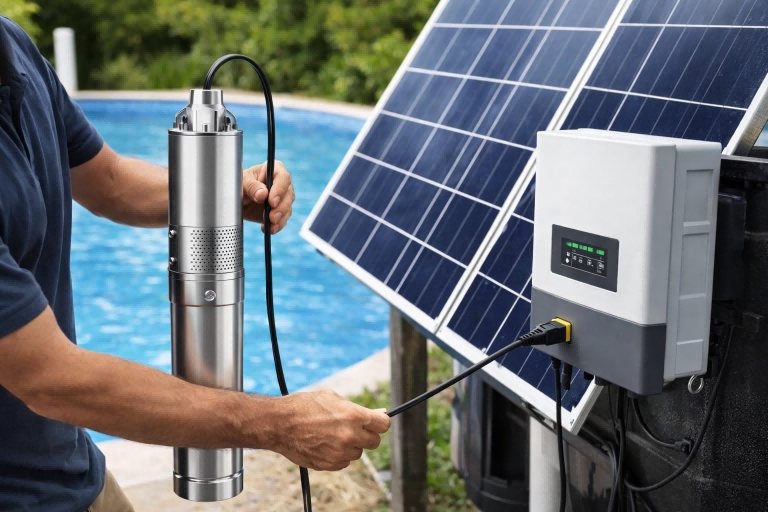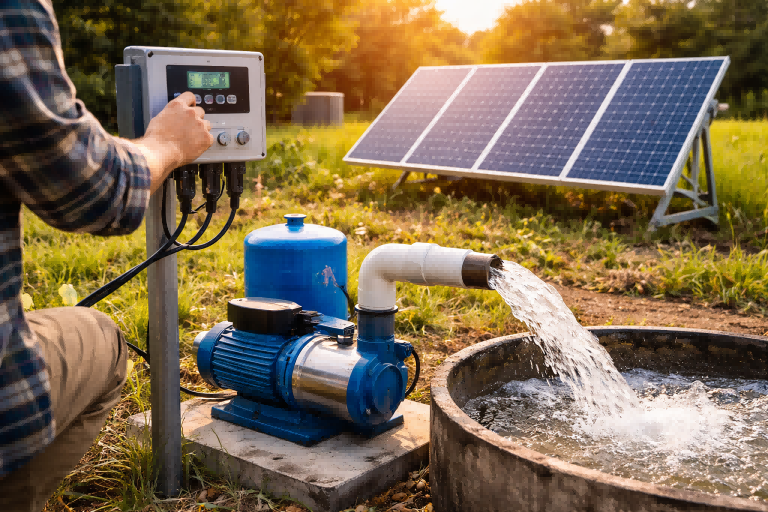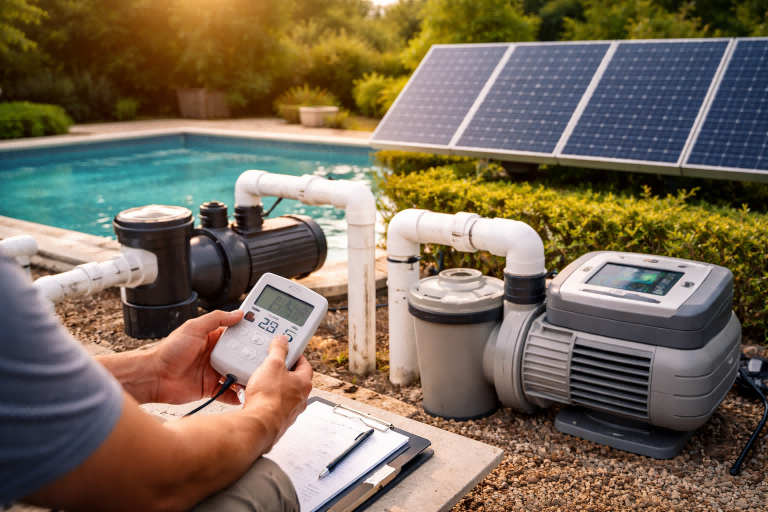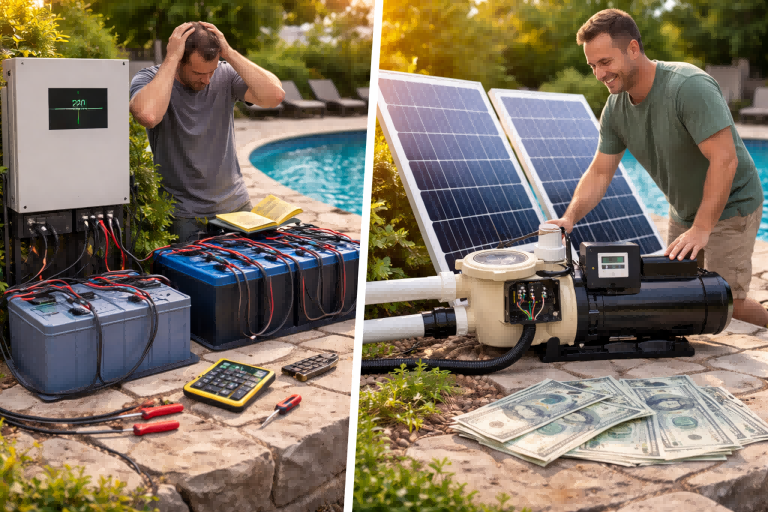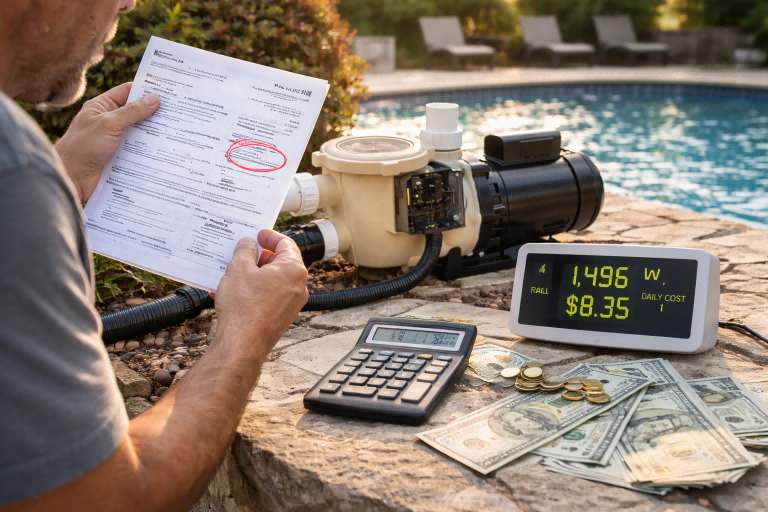Struggling with weak, inconsistent water pressure at home?
Worried about the high electricity bills from an old, inefficient water pump?
A modern water pump system can solve these problems effectively.
The most common pumps for houses include booster pumps, submersible pumps, and sump pumps.
For superior performance and efficiency in modern homes, a Variable Speed Drive (VSD) booster pump is the best choice.
It provides strong, constant water pressure while saving significant energy.
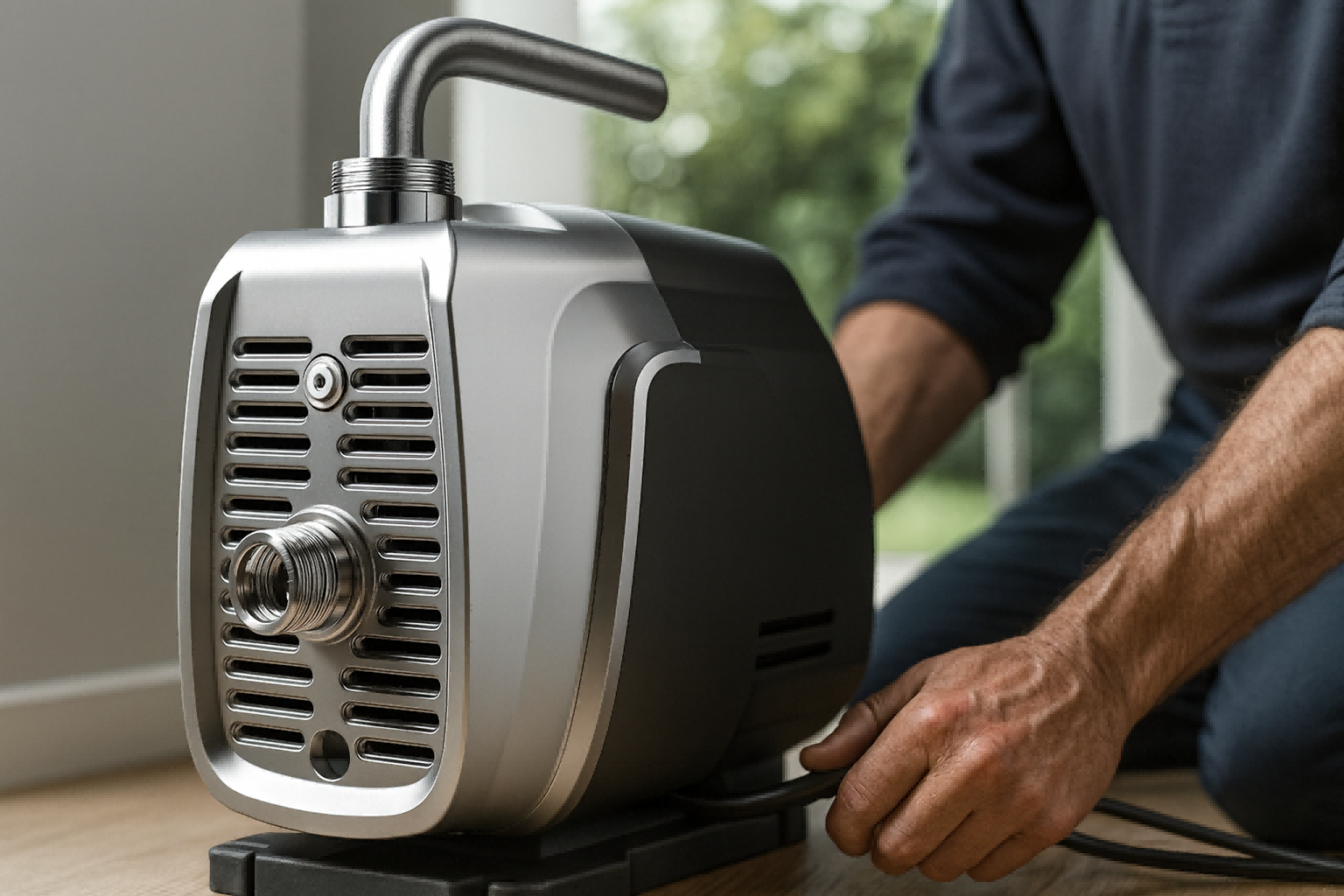
Choosing the right pump can feel overwhelming with so many options available.
But understanding the main types is the first crucial step.
Don't worry, we're here to break down the choices for you.
This guide will walk you through everything you need to know, making the decision simple and clear.
Understanding the Core Types of House Pumps
Are you confused by all the different pump names like centrifugal, submersible, and booster?
This confusion can lead to choosing a pump that doesn't fit the needs of a home.
We can make understanding the basics simple and straightforward.
House pumps fall into key categories based on their function.
Booster pumps increase low water pressure.
Submersible pumps lift water from wells or tanks.
Sump pumps remove unwanted water from basements.
Each type solves a specific household water problem.
Let's dive deeper into the main jobs that pumps perform in a residential setting.
Each type is designed for a very specific purpose.
Getting this right is the foundation of a reliable home water system.
For distributors, knowing these differences is key to advising clients correctly.
It builds trust and ensures customer satisfaction.
A happy customer is a repeat customer.
Boosting Water Pressure
Many homes, especially those in areas with low municipal supply pressure, suffer from weak showers and slow-filling appliances.
A booster pump is the solution.
It takes the existing water flow and increases its pressure.
This ensures a strong, consistent flow to all taps, showers, and appliances throughout the house.
Modern VSD booster pumps are the top choice here.
They intelligently adjust their speed to maintain constant pressure, no matter how many taps are open.
This not only provides superior comfort but also saves a great deal of energy.
Sourcing Water from a Well
Many properties are not connected to a municipal water supply.
They rely on a private well for their water.
This is where a submersible pump becomes essential.
As the name suggests, this pump is submerged deep inside the well.
Its job is to push water up from the ground to a storage tank or directly into the house's plumbing system.
These pumps are powerful and reliable, designed to lift water over significant vertical distances.
They are the unseen workhorses for self-sufficient homes.
Managing Wastewater and Flooding
Some homes have basements or areas below the main sewer line.
Sump pumps and effluent pumps are critical in these situations.
A sump pump sits in a pit (the sump) in the lowest part of a basement.
It automatically kicks in to pump out groundwater that seeps in, preventing floods.
An effluent pump, on the other hand, is used to move "greywater" or sewage from a low point up to the main sewer line.
Both are crucial for home safety and sanitation.
Single-Purpose vs. Multi-Functional Pumps: A Key Distinction
Does one pump do everything, or do you need specialized units for different tasks?
Getting this wrong leads to inefficient systems and unhappy homeowners.
Let's clarify the difference to help you design the most effective water systems.
Some pumps perform a single, specific task, like a sump pump that only removes flood water.
Others, like advanced VSD booster systems, dynamically manage the entire home's pressure needs.
Understanding this helps in creating truly efficient supply solutions.
The distinction between a single-task pump and a whole-system manager is crucial for modern applications.
It's the difference between a simple tool and an intelligent system.
For your business, offering intelligent systems is a significant competitive advantage.
It positions you as a provider of high-value, modern solutions, not just basic hardware.
Let's explore what this means for performance and customer benefits.
The Specialist Pump
Think of specialist pumps as having one job that they do perfectly.
A hot water circulation pump is a great example.
Its only function is to slowly circulate hot water through the pipes.
This ensures that hot water is instantly available at the tap, so the user doesn't have to wait.
A sump pump is another specialist.
It sits idle until it detects water, then it works at full power to pump it out.
These pumps are not designed for versatility.
They are built for reliability and effectiveness in a single, critical role.
They solve one problem, and they solve it well.
The System Manager Pump
A Variable Speed Drive (VSD) booster pump is a true system manager.
It doesn't just turn on and off.
It constantly monitors the water pressure throughout the entire house.
When someone opens a tap, the pump senses the pressure drop and speeds up just enough to maintain a constant, perfect pressure.
When another tap opens, it speeds up a little more.
When all taps are closed, it slows down or goes into a standby mode.
It manages the entire pressure environment of the home, ensuring comfort, protecting pipes from water hammer, and dramatically reducing electricity use.
This is not just a pump; it's the intelligent heart of a modern home's water system.
| Feature | Specialist Pump (e.g., Sump Pump) | System Manager (VSD Booster Pump) |
|---|---|---|
| Primary Function | Single, reactive task (e.g., remove water) | Manages entire system's pressure |
| Control System | Simple on/off float switch | Intelligent pressure sensors and VFD |
| Energy Use | Full power when on, zero when off | Varies with demand, highly efficient |
| User Experience | Solves one problem (e.g., no flooding) | Provides total comfort (constant pressure) |
| System Impact | Protects a specific area | Enhances and protects the entire plumbing system |
Booster Pumps: Running Your Whole-House Water System
Is your client's multi-story home struggling with weak pressure on the upper floors?
This common problem can make daily life frustrating.
Let's focus on the solution that powers the entire home's water distribution.
A booster pump is installed on the main water line to increase pressure for the whole house.
Modern VSD booster pumps are the best choice.
They act as an intelligent control center, ensuring every tap and shower has strong, stable pressure on demand.
A booster pump is more than just a component; it's the engine that drives a high-quality water experience in a home.
For a distributor, this is a high-value product that solves a very common and frustrating problem for homeowners.
Understanding how to select and position these systems is key to success.
It’s about selling a solution, not just a pump.
The technology inside these pumps is what sets them apart.
Why Standard Pumps Fall Short
Traditional booster pumps operate on a simple on/off cycle.
They use a pressure switch.
When pressure drops to a set minimum (e.g., 40 PSI), the pump turns on at 100% power.
It runs until the pressure hits a maximum (e.g., 60 PSI), then it shuts off.
This creates several problems.
First, the pressure is never constant; it fluctuates between the high and low settings.
Second, the constant starting and stopping at full power consumes a lot of electricity.
Third, the abrupt starts create a "water hammer" effect, which is noisy and can damage pipes and appliances over time.
They get the job done, but inefficiently and with significant downsides.
The VSD Advantage: Smart, Constant, and Efficient
A Variable Speed Drive (VSD) pump, also called an inverter pump, is a major technological leap.
It doesn't just turn on and off.
It uses an intelligent controller and pressure sensors to do something much smarter.
You set a desired pressure, for example, 50 PSI.
The VSD pump will then do whatever is necessary to hold that pressure perfectly constant.
If you open one small tap, the pump motor might run at only 20% speed.
If you turn on a shower and a washing machine, it might speed up to 60% to keep the pressure at exactly 50 PSI.
This intelligent adjustment has three huge benefits:
- Constant Pressure: The water flow is always smooth and strong. No more fluctuations.
- Energy Savings: By only using the exact power needed, VSD pumps can reduce electricity consumption by up to 50% or more compared to standard pumps.
- Quiet and Gentle Operation: The pump ramps up and down smoothly, eliminating water hammer and reducing wear on both the pump and the plumbing system. This extends the lifespan of the entire system.
| Parameter | Traditional On/Off Booster Pump | RAFSUN VSD Booster Pump |
|---|---|---|
| Pressure Control | Fluctuates between high/low setpoints | Perfectly constant at the desired setpoint |
| Motor Speed | 0% or 100% only | Variable (e.g., 10% to 100%) |
| Energy Efficiency | Low. Wastes energy on every start. | Very High. Saves up to 50%+ energy. |
| System Noise | Loud starts and stops (water hammer) | Extremely quiet, smooth operation |
| Equipment Lifespan | Shorter due to high mechanical stress | Longer due to soft starts and optimized use |
Submersible Pumps: Bringing Water Up from the Source
Does your client live off-grid or in a rural area without access to city water?
Their entire water supply depends on a reliable well.
Choosing the right pump for this job is absolutely critical.
A submersible pump is a sealed unit placed deep inside a well to push water to the surface.
It's the most efficient method for deep wells because pushing water is easier than pulling it.
This pump is the first and most important link in a private water system.
For a property with a well, the submersible pump is its lifeline.
If the pump fails, the house has no water.
Therefore, reliability, durability, and performance are the most important factors.
As a distributor, you need to provide a product that a family can depend on every single day.
This is a market where quality is non-negotiable.
The selection process involves more than just picking a model from a catalog.
How a Submersible Pump Works
Unlike jet pumps that are located above ground and pull water up, a submersible pump pushes water up.
The entire unit, which includes the pump and a sealed motor, is lowered into the well.
It's connected to the surface by a pipe to carry the water and a waterproof electrical cable for power.
This design has a major advantage: it doesn't have to fight against gravity and atmospheric pressure to lift the water.
Pushing is far more efficient, especially for deep wells.
The pump itself is typically a multi-stage centrifugal pump.
This means it has a series of impellers, each one a spinning disk.
Each impeller takes the water and adds pressure to it before passing it to the next one.
By the time the water leaves the last impeller, it has enough pressure to travel all the way to the surface and into the home's pressure tank.
Key Factors for Selecting a Submersible Pump
Choosing the right submersible pump is a technical decision.
It requires knowing several key pieces of information about the well and the home's needs.
Getting any of these wrong will result in poor performance or premature pump failure.
For a distributor, guiding a client through these factors is a value-added service.
- Well Depth: You need to know the total depth of the well and the level where the water sits (the static water level). The pump must be installed well below this level.
- Flow Rate (GPM): This is how much water the family needs. It's measured in Gallons Per Minute (GPM) or Liters Per Minute (LPM). You calculate this based on the number of bathrooms, appliances, and people in the house.
- Required Pressure (PSI): The pump must generate enough pressure to lift the water to the surface and still provide adequate pressure (e.g., 40-60 PSI) for the house itself. This is often called the Total Dynamic Head (TDH).
- Well Casing Diameter: The pump must physically fit inside the well's pipe, which is typically 4 inches or 6 inches in diameter.
Getting these details right ensures the pump you supply will work reliably for many years.
VSD Pumps: Optimizing and Measuring Energy Efficiency
Are your customers increasingly concerned about rising electricity costs?
An old water pump can be one of the most energy-hungry appliances in a home.
Offering a solution that directly cuts energy bills is a powerful selling point.
A Variable Speed Drive (VSD) pump is the most energy-efficient option available.
It measures the home's water demand in real-time and adjusts its motor speed to use the absolute minimum energy required.
This can reduce pump-related electricity costs by over 50%.
Energy efficiency is no longer a luxury; it's a primary demand from the market.
For distributors like Andrew in Australia, whose customers value quality and long-term savings, VSD technology is the perfect fit.
It's not just about selling a pump; it's about selling a smarter, more cost-effective water management system.
The technology is advanced, but the benefit is simple: it saves your customers a lot of money.
This is a powerful message that resonates in any market.
The Physics of Pump Energy Savings
There's a fundamental rule in pump physics called the Pump Affinity Laws.
They explain the relationship between a pump's speed, the flow it produces, and the energy it consumes.
The most important law for energy savings is this:
The power consumed by a pump is proportional to the cube of its speed.
What does this mean in simple terms?
If you reduce the pump's speed by half (e.g., from 100% to 50%), the energy it uses drops to one-eighth (1/2 x 1/2 x 1/2 = 1/8) of its original consumption.
A traditional pump can only run at 100% speed.
But a VSD pump can run at any speed.
Most of the time, a home's water demand is very low—just one tap running, for example.
A VSD pump will slow down to 20% or 30% speed to meet this low demand.
By doing so, it saves a tremendous amount of energy.
This is the core principle behind the massive efficiency gains of VSD technology.
Real-World Savings Calculation
Let's look at a simple scenario to see the savings in action.
Imagine a standard 1.5 HP (1100 Watt) pump runs for 3 hours per day.
- Standard Pump Energy Use: 1.1 kW x 3 hours = 3.3 kWh per day.
Now, consider a VSD pump in the same home.
Due to varying demand, its average power consumption might be only 40% of its maximum. - VSD Pump Energy Use: 1.1 kW x 40% average power x 3 hours = 1.32 kWh per day.
| Pump Type | Daily Energy Use | Annual Energy Use | Potential Savings |
|---|---|---|---|
| Standard Pump | 3.3 kWh | 1204.5 kWh | - |
| VSD Pump | 1.32 kWh | 481.8 kWh | 60% Savings |
This is not just a small improvement; it's a game-changer.
For a homeowner, the upfront investment in a VSD pump is paid back quickly through lower electricity bills.
For a distributor, this clear return on investment (ROI) is the most compelling sales argument you can make.
You are offering a product that pays for itself.
A Complete Guide to Different House Pump Applications
Feeling overwhelmed by all the choices and technical terms?
It’s easy to get lost.
But if we organize the pumps by their specific application, everything becomes much clearer.
Let's create a simple map of which pump to use for which job.
The best pump for a house depends entirely on the specific task.
For boosting city water pressure, use a VSD booster pump.
For pulling water from a deep well, use a submersible pump.
For preventing basement flooding, use a sump pump.
Think of yourself as a consultant, not just a seller.
By guiding your clients to the perfect pump for their specific application, you build a reputation for expertise.
A clear, application-based guide is a valuable tool for your sales team and your customers.
It removes confusion and builds confidence in the purchasing decision.
This approach helps you match the right technology to the right problem, every time.
Application 1: Improving Water Pressure from a Municipal Source
This is the most common urban and suburban requirement.
- Problem: Weak water pressure from the city's main line. Showers are weak, and appliances take a long time to fill.
- Cause: The house is far from the water tower, it's on a hill, or the city infrastructure is old.
- Solution: Intelligent VSD Booster Pump.
- Why: It provides constant, high pressure throughout the entire house. It's quiet, compact, and extremely energy-efficient. It's the modern, premium solution for comfort and savings. RAFSUN's VSD pumps are specifically designed for this role, offering best-in-class performance.
Application 2: Supplying Water from a Private Well or Tank
This is the standard for rural homes, farms, or properties with a private water source.
- Problem: Need to reliably lift water from an underground source and deliver it to the house.
- Source: A deep well, a shallow well, or a large rainwater storage tank.
- Solution:
- Deep Wells (>25 feet / 8 meters): Submersible Pump. It's the most efficient and reliable choice for deep applications.
- Shallow Wells (<25 feet / 8 meters): Jet Pump. These are located above ground and can pull water up from a shallow source.
- Why: The choice depends on the water depth. Using the wrong type will simply not work.
Application 3: Managing Drainage and Preventing Flooding
This is a critical safety and property protection issue, especially in areas with high rainfall or high water tables.
- Problem: Water is collecting in a low-lying area like a basement or yard.
- Source: Groundwater seepage, heavy rain, or greywater from basement appliances.
- Solution:
- Groundwater/Rainwater: Sump Pump. Installed in a sump pit, it automatically removes water before it can cause a flood.
- Greywater/Sewage: Effluent Pump or Grinder Pump. These are designed to handle small solids and move wastewater up to the sewer line.
- Why: These are specialized pumps for handling unwanted water. Using a regular water pump would clog and fail quickly.
Application Summary Table
| Application | The Problem | Recommended Pump Type | Key Benefit |
|---|---|---|---|
| City Water Pressure | Weak showers, low flow | VSD Booster Pump | Constant pressure, energy savings |
| Deep Well Supply | Need water from >25ft deep | Submersible Pump | High efficiency, reliability |
| Shallow Well Supply | Need water from <25ft deep | Jet Pump | Easy access for maintenance |
| Basement Flooding | Groundwater seepage | Sump Pump | Automatic flood prevention |
| Wastewater Removal | Draining a basement bathroom | Effluent/Grinder Pump | Can handle solids and waste |
Conclusion
The right house pump solves a specific problem.
VSD booster pumps provide constant pressure, submersibles draw from wells, and sump pumps prevent flooding.
Choosing correctly ensures an efficient, reliable water system.
FAQs
What size water pump do I need for my house?
This depends on your water demand, measured in Gallons Per Minute (GPM).
Calculate it by counting the number of water fixtures and using an online sizing chart.
What is the difference between a jet pump and a submersible pump?
A jet pump is on the surface and pulls water up, best for shallow wells.
A submersible pump is inside the well and pushes water up, best for deep wells.
How do I increase water pressure in my house?
The best way is to install a booster pump on your main water line.
A VSD booster pump will provide strong, constant pressure throughout the home.
How long does a house water pump last?
A quality well-maintained pump, like a submersible or booster pump, typically lasts from 8 to 15 years, depending on usage and water quality.
Can a water pump be repaired?
Yes, many common issues like a faulty pressure switch or capacitor can be repaired.
However, for major motor failure, replacement is often more cost-effective.
Are VSD pumps more expensive?
VSD pumps have a higher initial cost than standard pumps.
However, they pay for themselves over time through significant energy savings on your electricity bill.


